
|
Computers in your life
|
Melvin Berger |
Explains how computers work and discusses their increasing importance in more and more areas of day-to-day life. |
OL103761W |

|
Disease detectives
|
Melvin Berger |
Describes the activities of the Center for Disease Control in Atlanta, Ga. in tracking down the cause of Legionnaires' disease and other mysterious health problems. |
OL103764W |

|
Growl!
|
Melvin Berger,Mel Berger |
A simple explanation of what bears look like, how they hunt, what they eat, how they sleep during the winter, and how their cubs are born and raised. |
OL103773W |

|
Grub to ladybug
|
Melvin Berger |
Une série de premiers documentaires servant d'initiation à la lecture. Le court texte, qui tient en une phrase par page, est rédigé dans une large typographie et est accompagné de photographies attra… |
OL103774W |
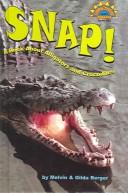
|
Snap
|
Melvin Berger |
Photographs and simple text teach students in grades one and two about alligators and crocodiles. |
OL103791W |

|
Storms
|
Melvin Berger |
Describes the creation of a thunder and lightning storm, the causes of rain, sleet, hail, and snow, and how to find safety from a storm. |
OL103794W |

|
A whale is not a fish and other animal mix-ups
|
Melvin Berger |
Is it an alligator...or a crocodile? A rabbit...or a hare? What makes these look-alikes different? Find out in this light and breezy introduction to animals that highlights differing traits, from siz… |
OL103802W |

|
What do animals do in winter?
|
Melvin Berger |
Examines the different strategies which animals use to stay alive during cold weather, including migration, hibernation, and changing color. |
OL103803W |
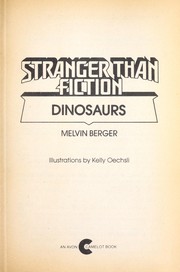
|
Stranger than fiction
|
Melvin Berger |
Discusses large or unusual inhabitants of the sea, including the killer whale, electric eel, giant squid, and coelacanth. |
OL103819W |

|
Telephones, televisions, and toilets
|
Melvin Berger |
A simple explanation of how three household items work. |
OL103820W |

|
Where are the stars during the day?
|
Melvin Berger |
Basic information on our solar system, its components, their movements, and their likely history. |
OL103823W |
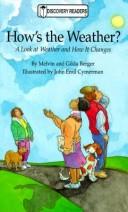
|
How's the weather?
|
Melvin Berger |
Discusses how and why the weather changes and ways to predict the weather by observing the sky, clouds, and wind. |
OL103831W |
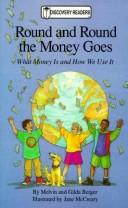
|
Round and round the money goes
|
Melvin Berger |
Discusses how the practice of using coins and paper money evolved and explains the circle money travels as it is earned, saved, and spent. |
OL103832W |

|
A butterfly is born
|
Melvin Berger |
Follows the life cycle of a butterfly from egg through larva and pupa stages to adulthood. |
OL11545523W |

|
101 Spooky Halloween Jokes
|
Melvin Berger |
A collection of jokes about ghosts, black cats, skeletons and other Halloween things. |
OL15082945W |

|
Animal hospital
|
Melvin Berger |
Discusses the varied activities of veterinarians and their assistants in animal hospitals and of researchers in animal medicine. |
OL15082957W |

|
Atoms, molecules, and quarks
|
Melvin Berger |
An explanation of the composition, behavior, and uses of atoms, molecules, and quarks, the building blocks of the universe. |
OL15082972W |

|
Bright stars, red giants, and white dwarfs
|
Melvin Berger |
Describes the various stages in the birth, life, and death of stars and discusses theories about the ultimate future of our universe. |
OL15082981W |

|
Cancer lab
|
Melvin Berger |
An introduction to cancer, cancer research, and associated career opportunities. Discusses the particular activities of some leading scientists in their research laboratories. |
OL15082994W |
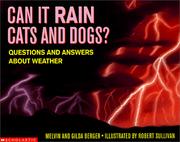
|
Can it rain cats and dogs?
|
Melvin Berger,Gilda Berger |
Provides answers to such questions about the weather as "What makes the weather?", "Does air have weight?", "How big are hailstones?", and "What is El Niño?" |
OL15082995W |



















